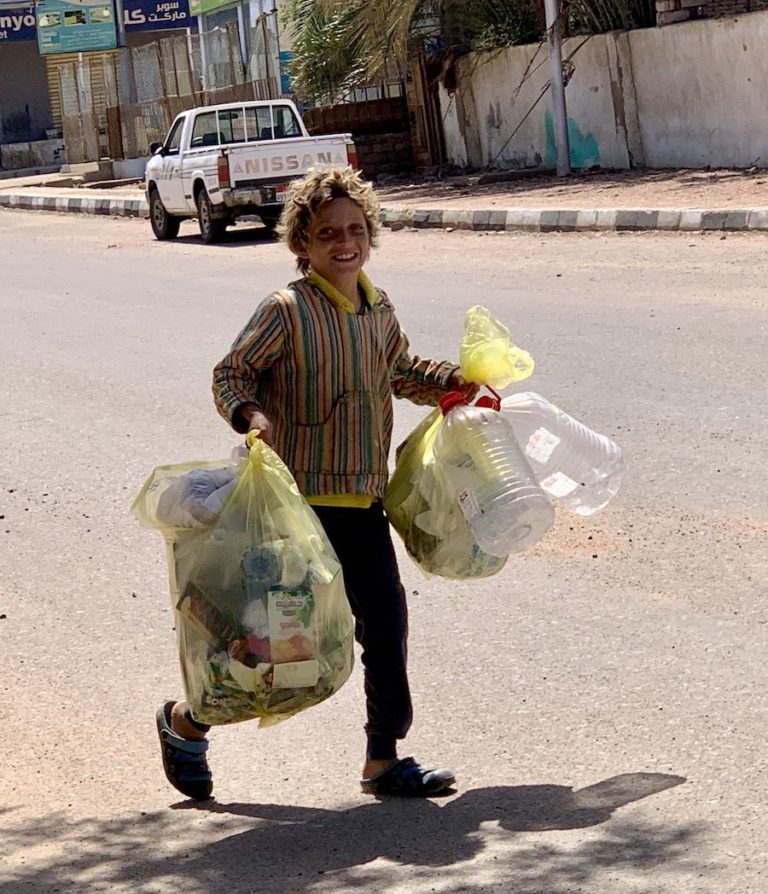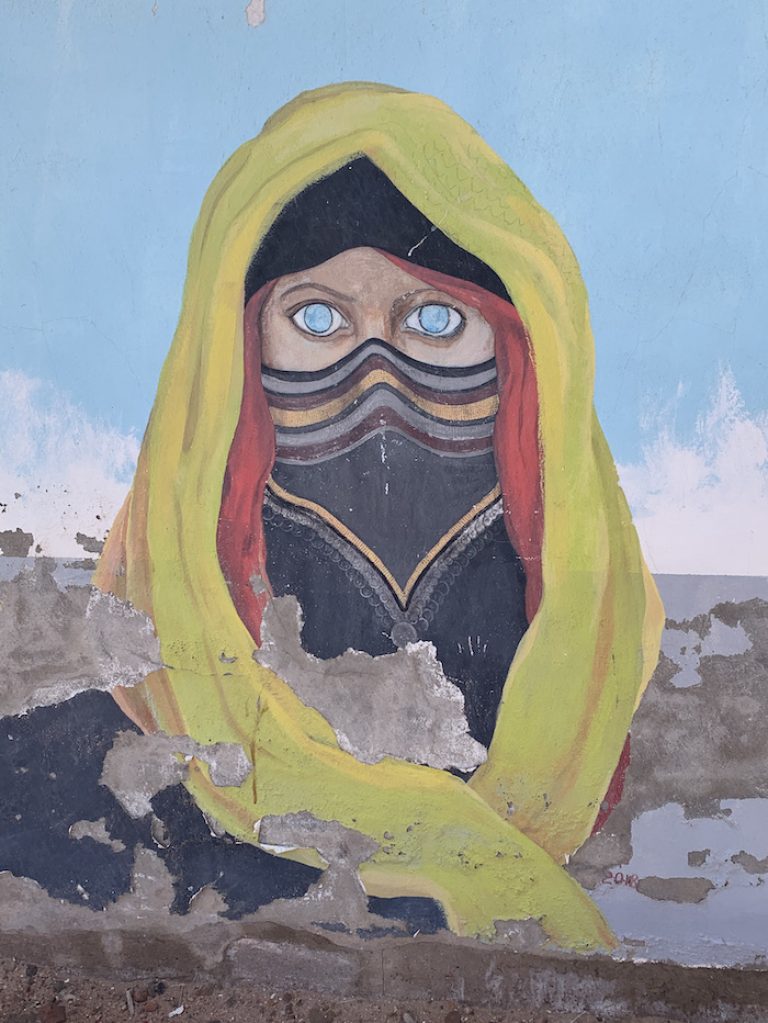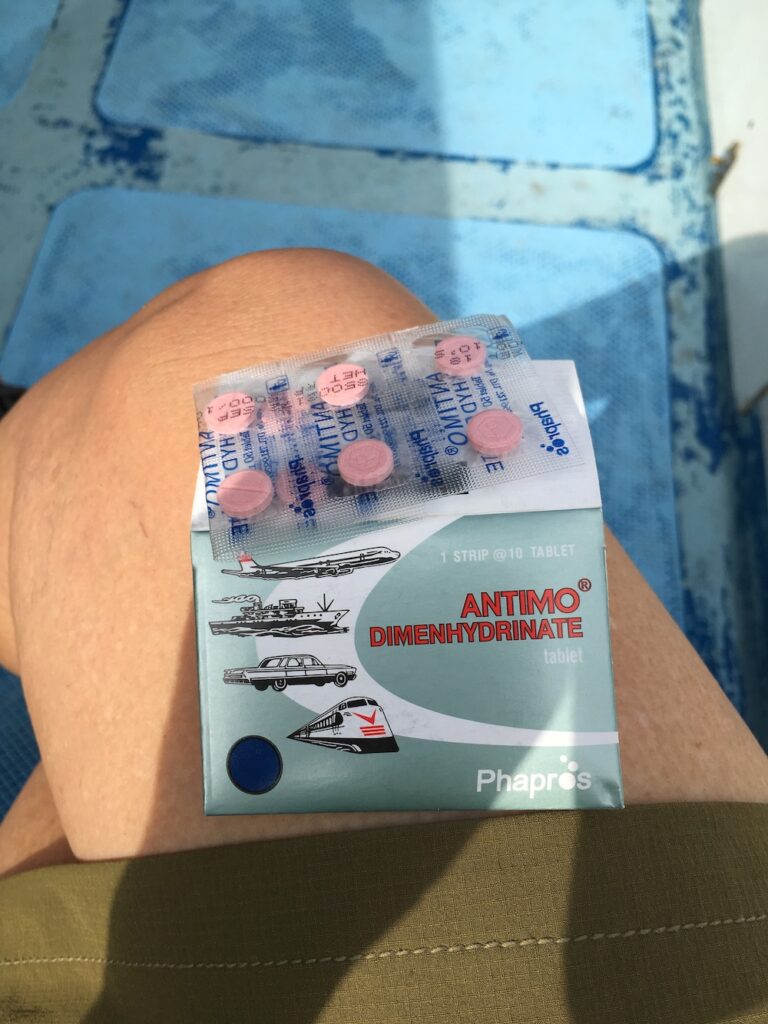HOW TO CALL PEOPLE BORN IN THE CITY OF BUENOS AIRES AND WHY
People born in Buenos Aires are called “porteños” which means from the port or people of the port. One of the reasons why the porteño word came about, was that most folks would arrive in Argentina at the port in ships from Europe (remember over 9 million landed in the country from 1850-1955). The word is set for anyone who was born inside the city limits.

Why the name “Buenos Aires?
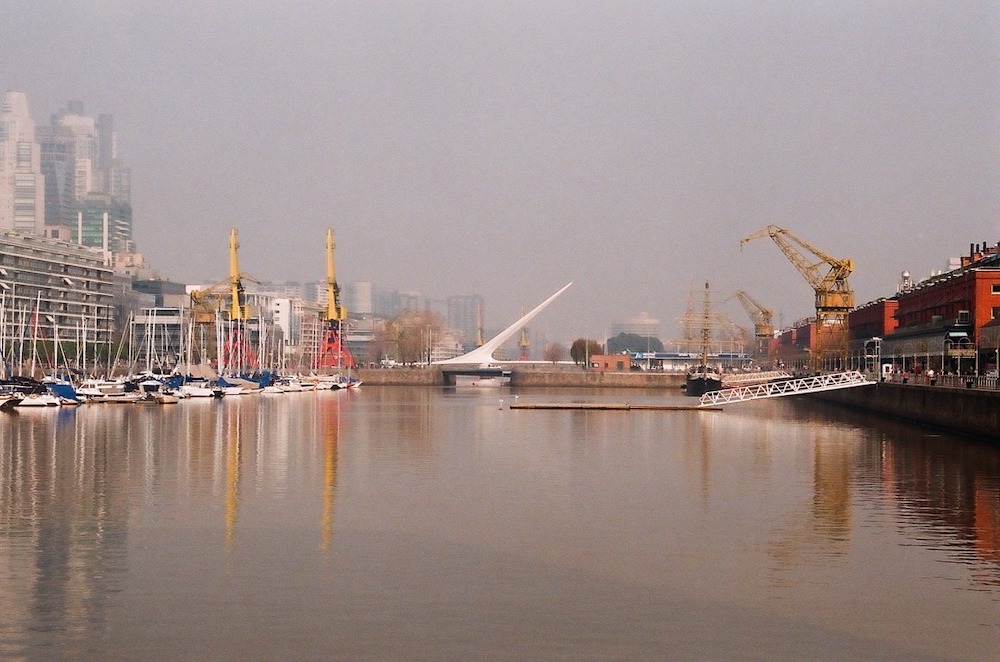
Buenos Aires literally means “good airs.” It is a name that originated from the first Spanish colonizers in the country in the 16th century. The story is long because Spaniards had to try hard to win the place from the natives and owners of the land (don’t get me started) and they had to come to the land a couple of times to “wind” the place. These first “settlers” were very catholic and devotees of the Virgin of Saint Mary of the Good Airs and it was later shortened to “Buenos Aires.”
HOW TO CALL BUENOS AIRES: Several ways to call Buenos Aires
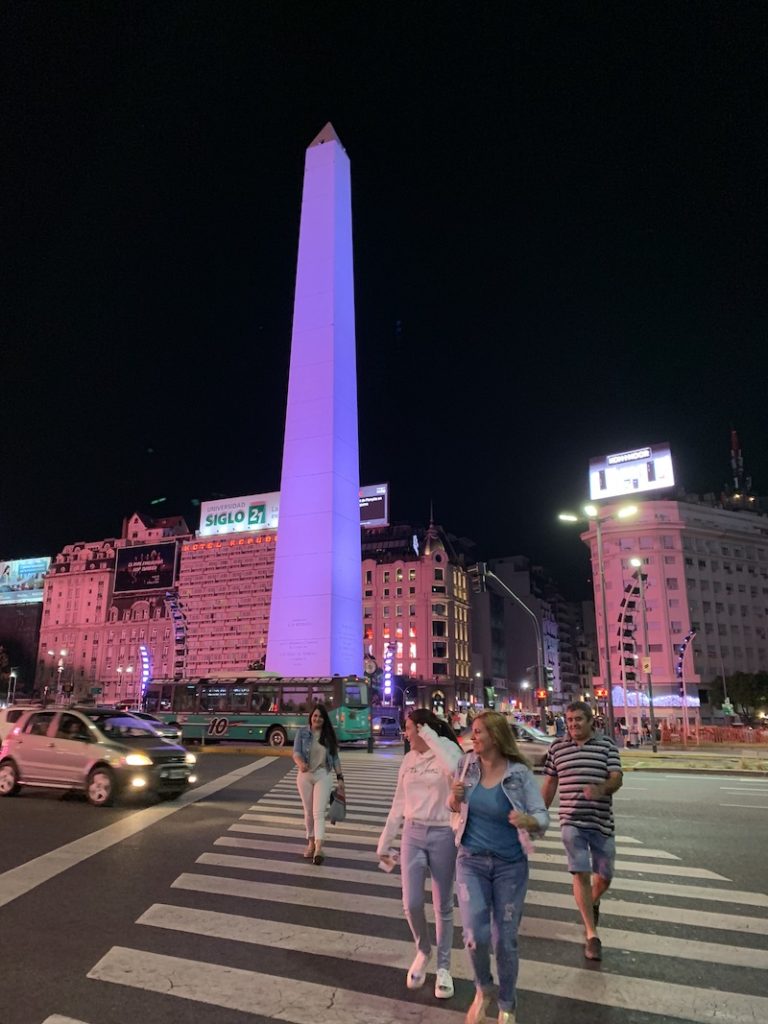
It is mind-boggling the different ways in which the city is called by many, and it can get a bit confusing in a conversation. Here are some examples:
Capital Federal, Ciudad de Buenos Aires, Capital, B.A., C.A.B.A, BA, etc. Yes! all of these words mean the city of Buenos Aires.
An important thing to know is that the word Buenos Aires can be confusing even during local conversations. The city of Buenos Aires is located within the province of the same name, Buenos Aires. Thus when in conversation sometimes we have to ask, en la Provincia o en capital? (in the province or the capital city?) to make sure we get it straight. So do not be afraid to ask to clarify the location.
Understanding the city of Buenos Aires
Buenos Aires has that “je ne sais quoi” that is composed of a mix of different customs and traditions Europeans brought with them that were slowly assimilated, making it a local cultural trademark.
FILETEADO Drawing and painting
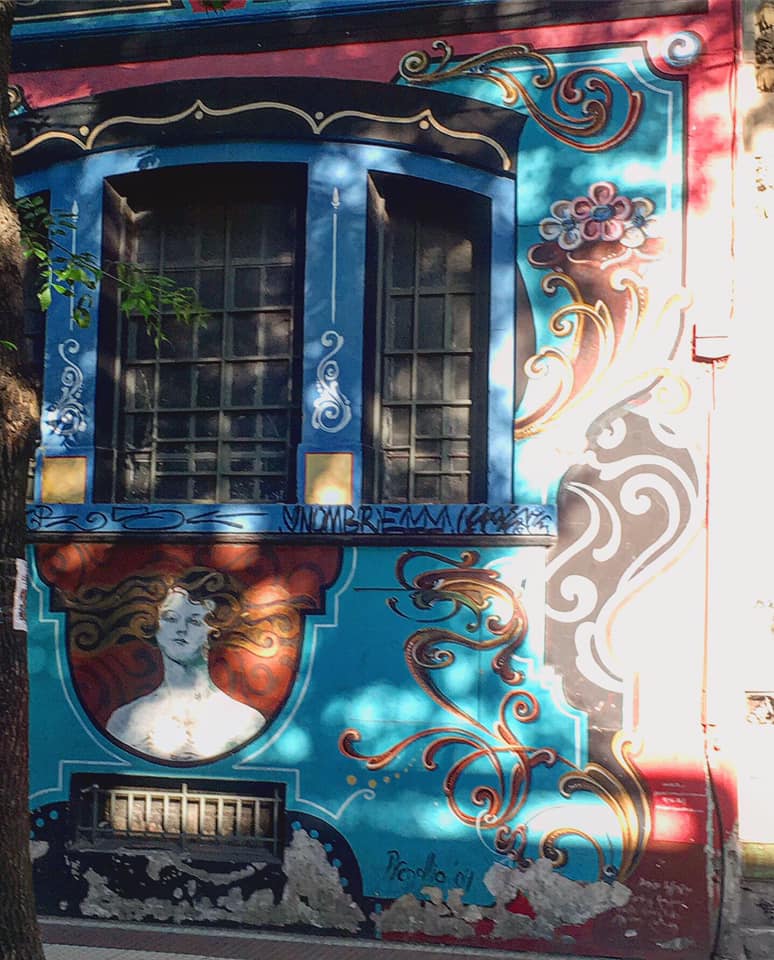
Fileteado (Spanish pronunciation: [fileteˈaðo]) is a type of artistic drawing and lettering, with stylized lines and flowered, climbing plants, typically used in Buenos Aires, Argentina. It is used to adorn all kinds of beloved objects: signs, taxis, lorries, and even the old colectivos (Buenos Aires’s buses).
ICONIC CAFES and OTHER CAFES
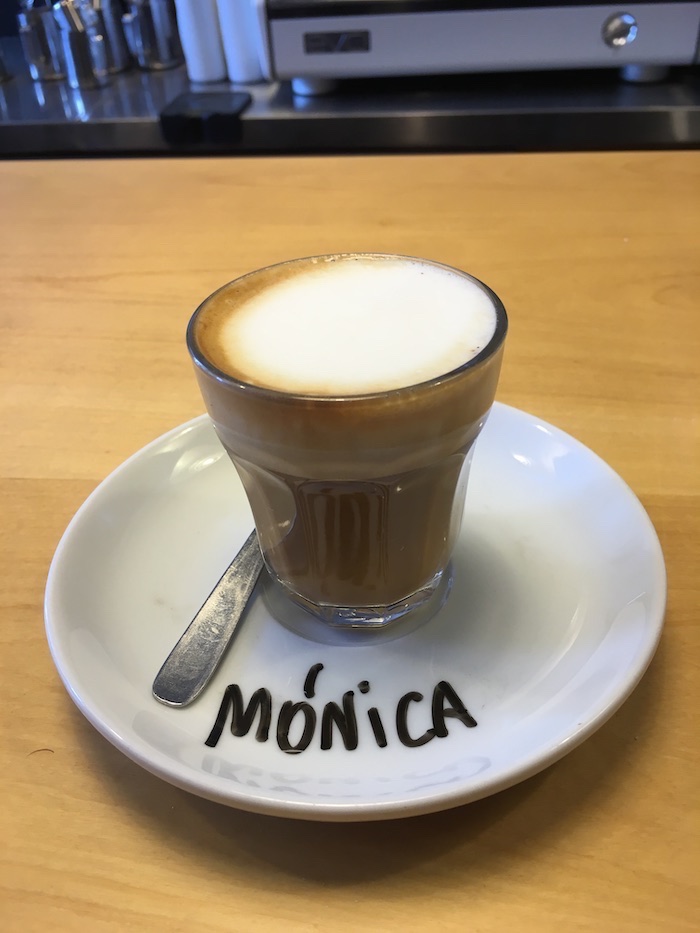
TANGO
Even though I could never learn to dance tango (beyond bad here) I could always sense and feel its glamour. It is sensual, elegant, and truly sophisticated. Each dancer is way too close to the other but at the same time, each one is in control. Instruments that require major concentration and dedication in an ensemble called “Orquesta” such as piano, violin, guitar, double bass, and tango accordion that is called “bandoneon” among the many. The ensemble alone exudes sophistication.
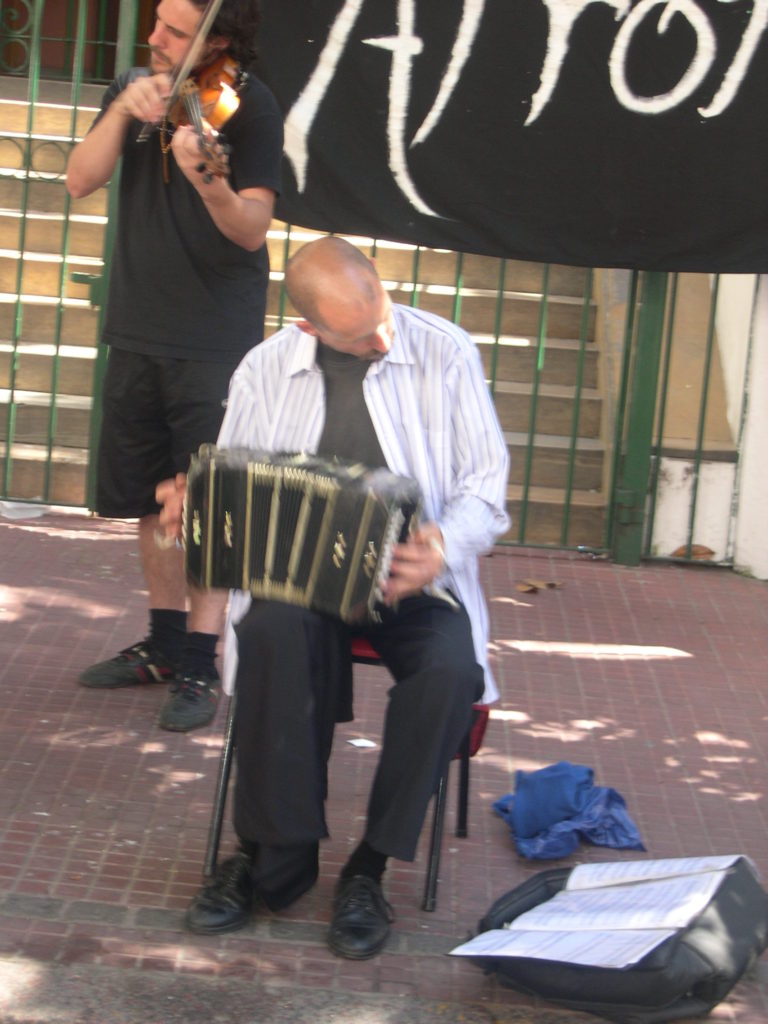
Playing tango music on the streets. Here are a violinista and a bandoneon player. Bandoneon is crucial in any tango ensemble. Bandoneon is a kind of concertina that once you hear it, you understand why Tango is such a deep felt bohemian tune.
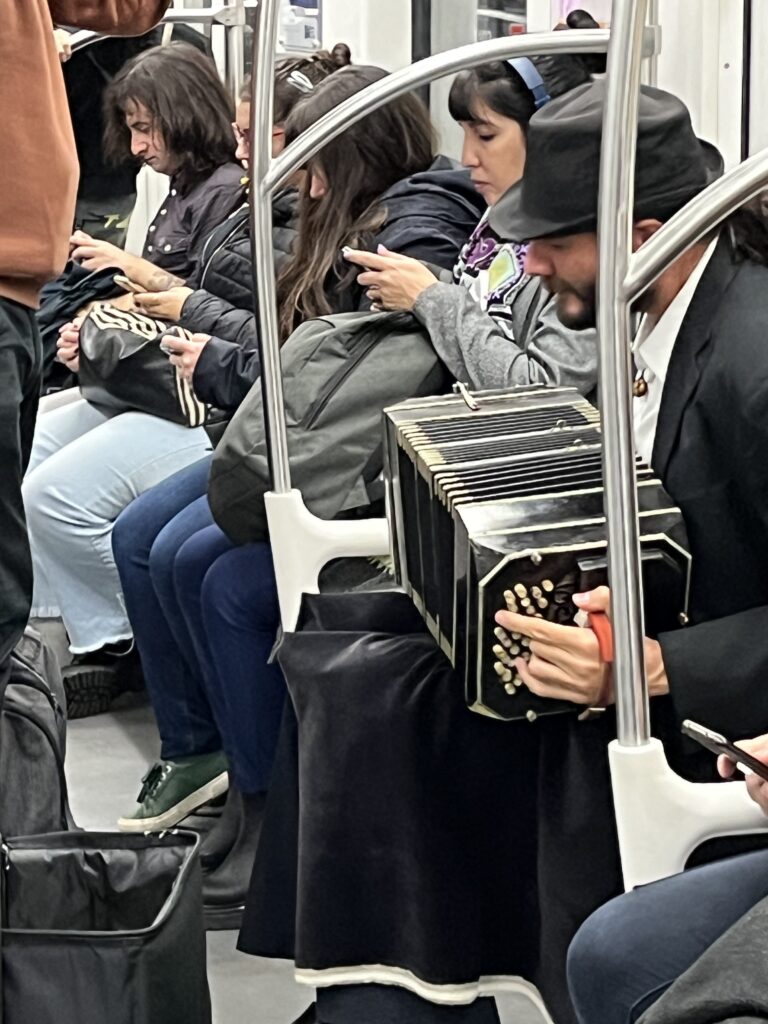
Street bandoneon tango player on a subway. ALWAYS give a tip!
FULTBOL (soccer) and of course, World Cups!! #football in Argentina
Soccer (fútbol) is probably the most popular sport in the country, another religion besides drinking mate. It is a sport that was introduced by the British who were navigating to the country and they invaded and the first Argentine league was introduced in 1891.
Football in Argentina starts being played in open spaces, on the streets, and for the few lucky ones in small or big clubs. Football is played with what you have, with what you can “kick” to say the least; a bottle, a ball made with rags, whatever!! an improvised way of playing it that gives that characteristic to Latin players. Football teaches discipline and the great spirit of a team.
Messi and Maradona football players are two of the world-famous soccer icons today even though Maradona passed away in 2020.


It is a passion for a country that folks rarely have, they are not nationalistic as it seems, but the people’s mix of backgrounds and nationalities create a subtle rift that is rarely perceived. Argentina is continuously searching for a strong identity as a nation and football brings that to life.
#WorldCup and Football Tournaments in Argentina
If you can travel to Argentina when the WorldCup is going on, you are one of the fortunate ones~ Passion is felt all around the country, from the small places to the big city of Buenos Aires.
The World Cup/ Superclasico/ Copa America any football tournament in Argentina means madness, happiness, togetherness all that can be that unites a country that has been lapidated by economic and political corruption. However, during the WorldCup tournament dressing up means lifting your spirit and supporting your team.

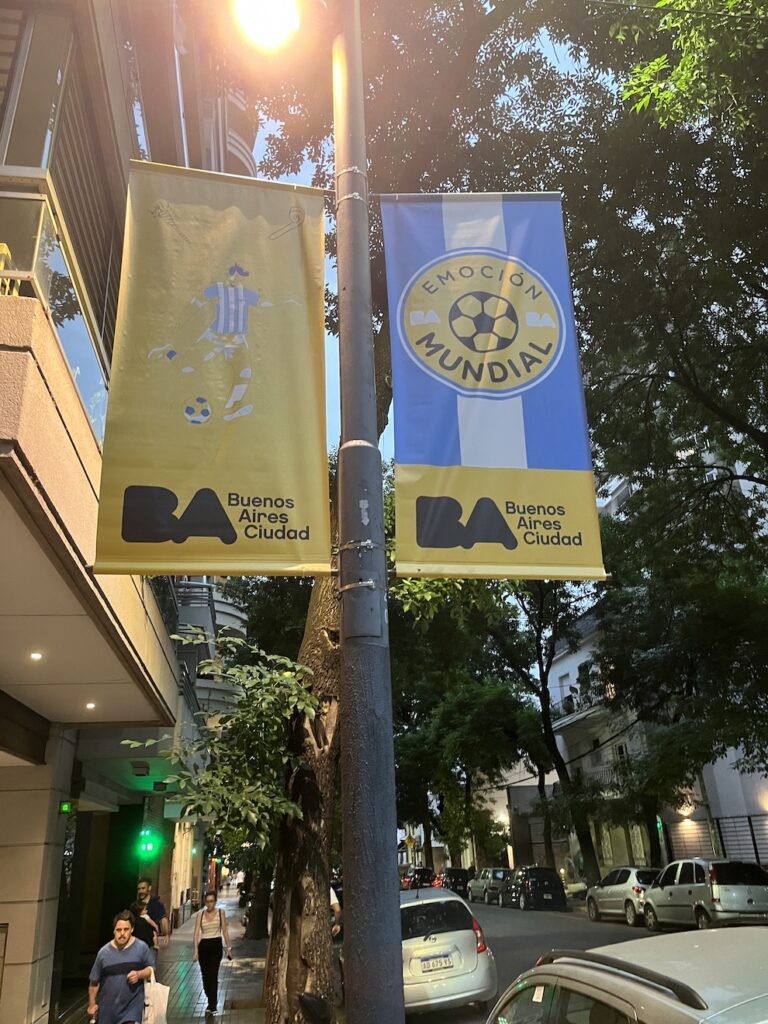
Here are some “items” that are sold during the world cup that can be a “cabala” (a symbolic interpretation of an item given by a person that can bring good or bad luck). This means that if you have a “cábala,” something that you believe in that will bring good luck such as wearing an Argentine flag on your underwear that is what you do until the end of the games (for example).
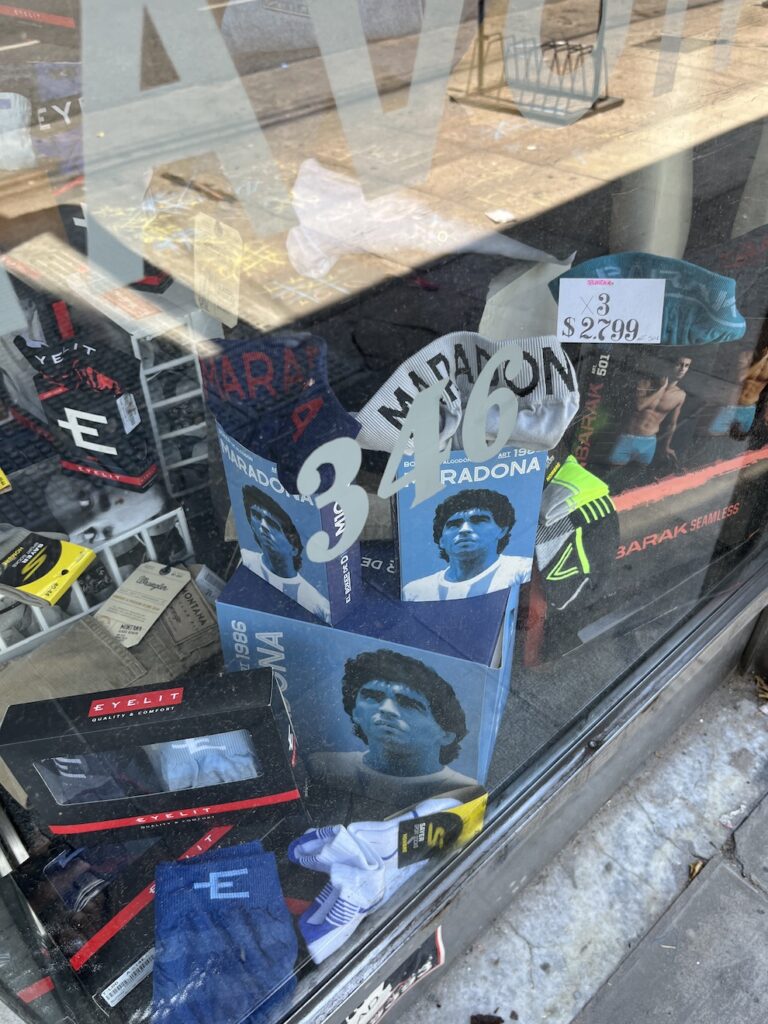

You dress up with the flag anything you can, hopefully, it would bring good luck and joy! that is what Argentines truly need!
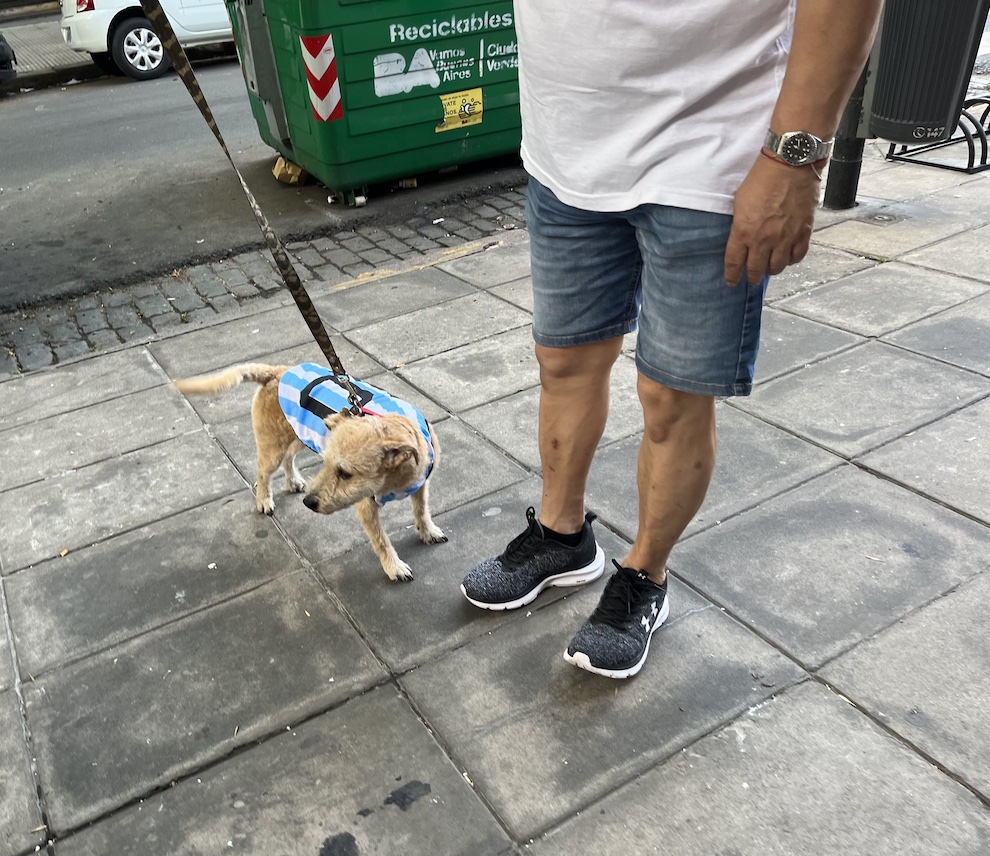

WORLDCUP RELIGION: the pics say it all! These pictures were taken by friends when Argentina won the fulball (soccer) worldcup.
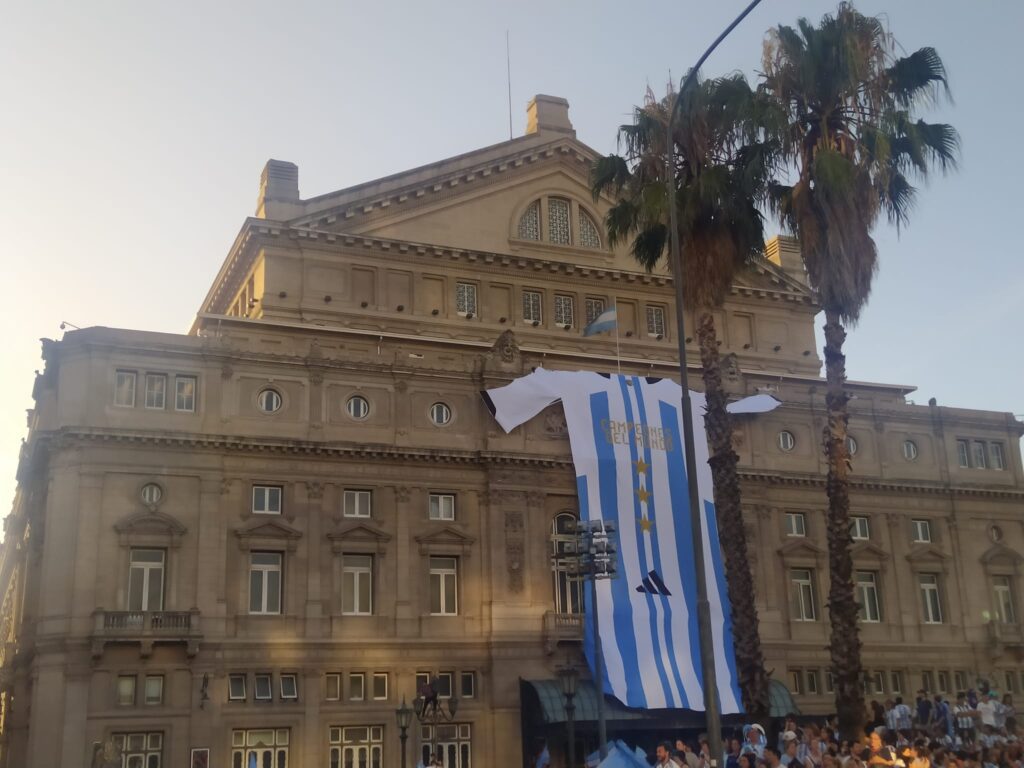


COMIC STRIP: MAFALDA
This is one of the best comic strips that you see all around the world; MAFALDA. Mafalda is a clever six-year-old with the soul of a genius. It has been translated into 26 languages and I remember in Italy they told me it was an Italian strip….NOT!! I love the character, my favorite in the world, because she pegs Argentine reality, knows a lot about the world, and loves humanity…go figure out why I love her!!!!
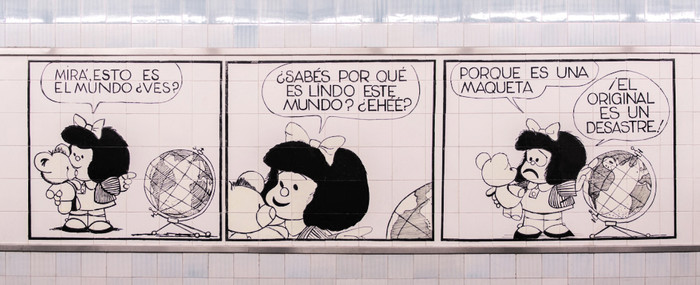
The image was taken courtesy of the city of Buenos Aires website
LOCAL BEVERAGES: FERNET and VINO
It is a glorified beverage that continues the European tradition by being of Italian origin. Fernet is a staple in BA. Once your taste buds get used to the mix of the herbs, bitterness, and fire that sets once you gulp it, there is the “allure” of its intensity. How do you become used to it? Well, in my case when I had stomach issues mom used to give me a little bit. I guess that gave me a major kickstart to the drinking part. Now I can drink when my stomach either hurts or not.
VINO (WINE)

Argentines love wine, and it is the fifth-largest producer of wine in the world. They do export it, but they drink it too. Lots of vino in the supermarket with amazing quality and great prices.
more vino…
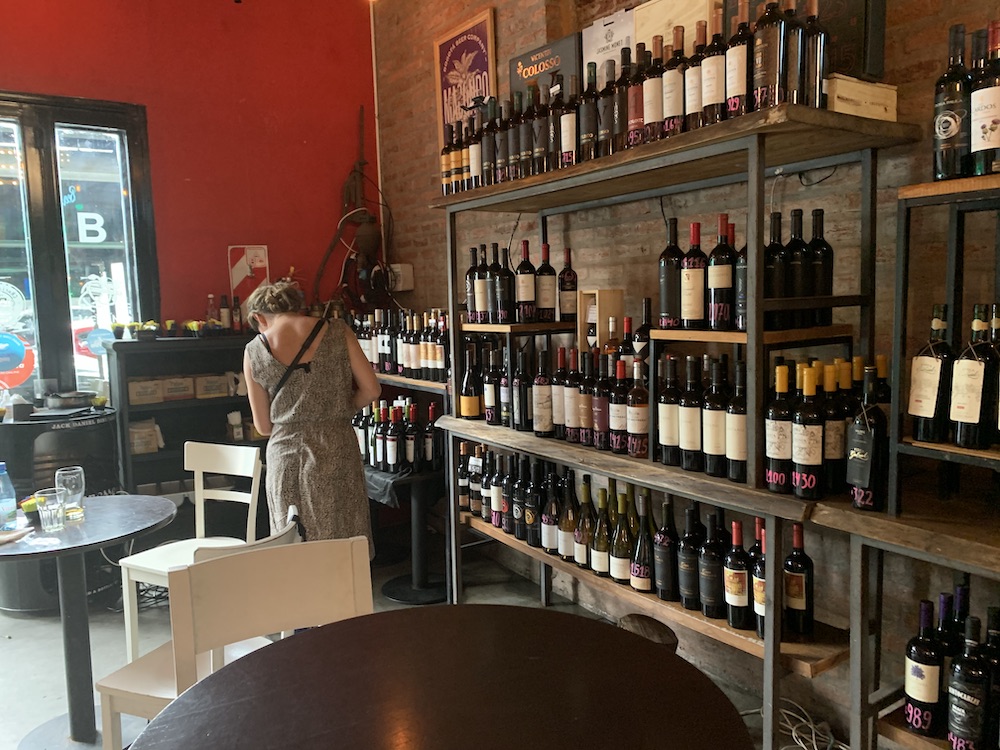
FOODS
FAINA
Not to forget about my ancestors and their place of origin, faina is not only “married” to your slice of pizza (that is how you are supposed to eat it, one on top of the other one) but a delicacy inherited from Northern Italians (you can’t see me now but I am standing up in respect. When we talk about Northern Italy we know that Faina (Farinata en Italiano) originated in Genova expanding rapidly to Piedmont (one of my family’s origins).
DULCE DE LECHE
It is a favorite of Argentines and a staple for any food. Dulce de leche is not cajeta (a term used in Mexico) and it is not caramel but a bit similar. When Argentines like something they go all the way. Dulce de leche is a confection made from slowly cooking cow milk and sugar. Dulce de leche with crackers, with butter and crackers, dulce de leche ice cream, pastries with dulce de leche filling, chocolate with dulce de leche filling, donuts with dulce de leche, sweet potatoes and dulce de leche, churros with dulce de leche you name it!
EMPANADAS
It is a pastry pie/fill in with favorite ingredients, You find them everywhere, even when you travel abroad (see them on my last Mexico trip). Argentines love them and everything has to do with an empanada for meat lovers or vegans always one type available for anyone,
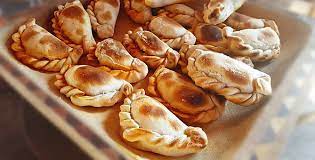

PICADAS
This is a tray of cold cuts, charcuterie board, with different types of cheese, hams, salami, sausages, pickled veggies, olives, etc. The tray is usually a cutting or wooden board. It is sometimes served as an appetizer and other times as a meal itself. It is served with different types of breads, bread-sticks, crackers, chips, etc. Picadas are served in a small version before eating an “asado” (Argentine barbecue) or as a meal with friends or relatives the most. It is a friendly meal!!
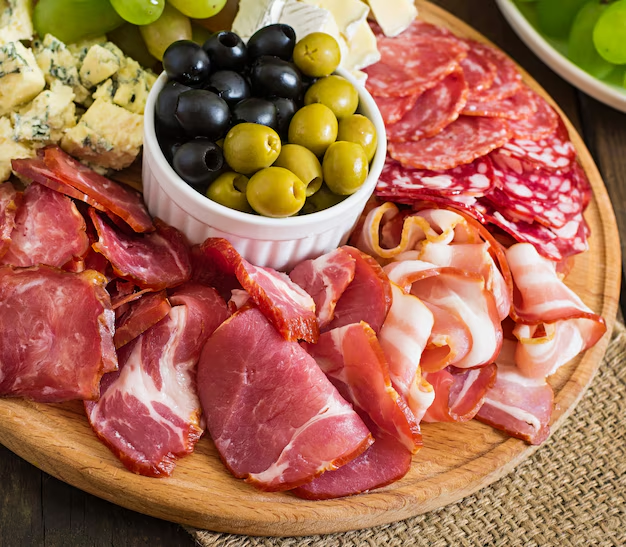
Many styles of picadas for a meal or as an appetizer. It is usually accompanied by wine.
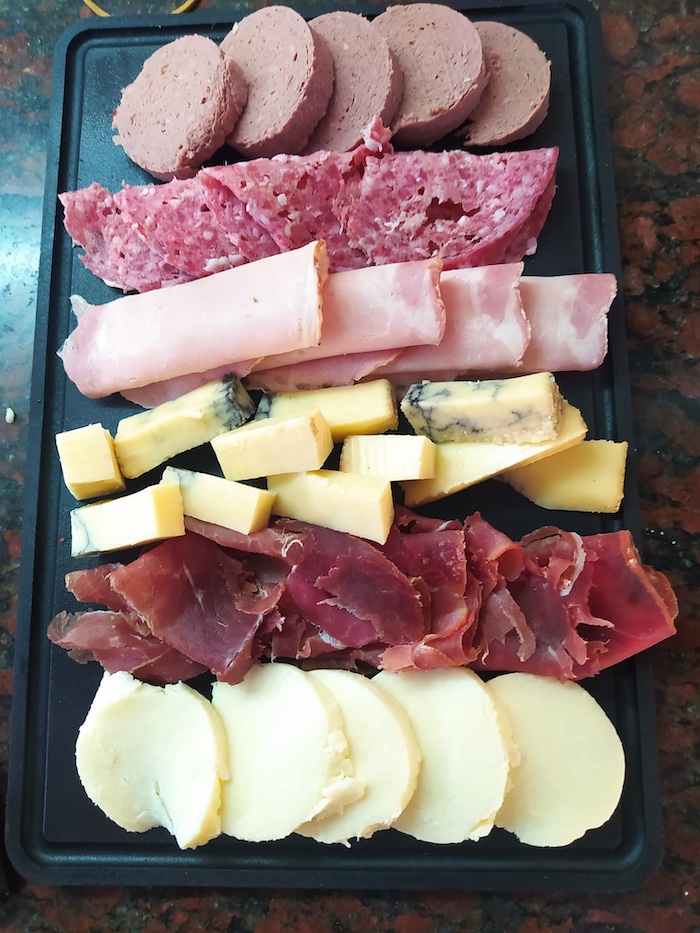
EATERIES & CAFES
BODEGONES
The etymology, the origin of the word, is a still life picture or a painting whose central theme is pantry items. It can be fruits, vegetables, fishing, etc. However, Bodegones in BA are local restaurants that have specific characteristics. A bodegón has a “personality” of its own, it develops a history in the location and it becomes part of the neighborhood’s feel.

Characteristics: affordable, traditional food, homey feel, it has character, friendly, and a must for anyone visiting! Absolutely a fan of bodegones here.
EVENTS & SHOWS
There are plenty of shows and festivals in Buenos Aires but here are some that highlight the Buenos Aires spirit!
WORLD TANGO DANCE CHAMPIONSHIP
A MUST! soo soo Buenos Aires like, remember that Tango originated by the working classes in the streets of this amazing place during the 19th century.
LOLAPALOOZA FESTIVAL
Every March, from rocking out to headlining acts to discovering new up-and-coming bands, there’s something for everyone at this incredible event. The energy is contagious, the food is delicious, and the sense of community is palpable. Whether you’re a seasoned festival-goer or a first-timer, Lollapalooza Argentina is sure to leave you with unforgettable memories and a heart full of joy. Pack your festival gear and get ready to dance your heart out at this fantastic celebration of music and togetherness!
GAY PRIDE (Marcha del Orgullo in Spanish)
Every November Buenos Aires boasts one of the most vibrant and inclusive Gay Pride celebrations in all of Latin America. The energy and excitement of the event are contagious, with rainbow flags proudly waving, colorful costumes filling the streets, and a sense of love and acceptance surrounding the entire city. It’s a time when people from all walks of life come together to celebrate diversity, spread awareness, and show support for the LGBTQ+ community. The parade is a spectacular display of unity and joy, with music, dancing, and a powerful message of equality at its core
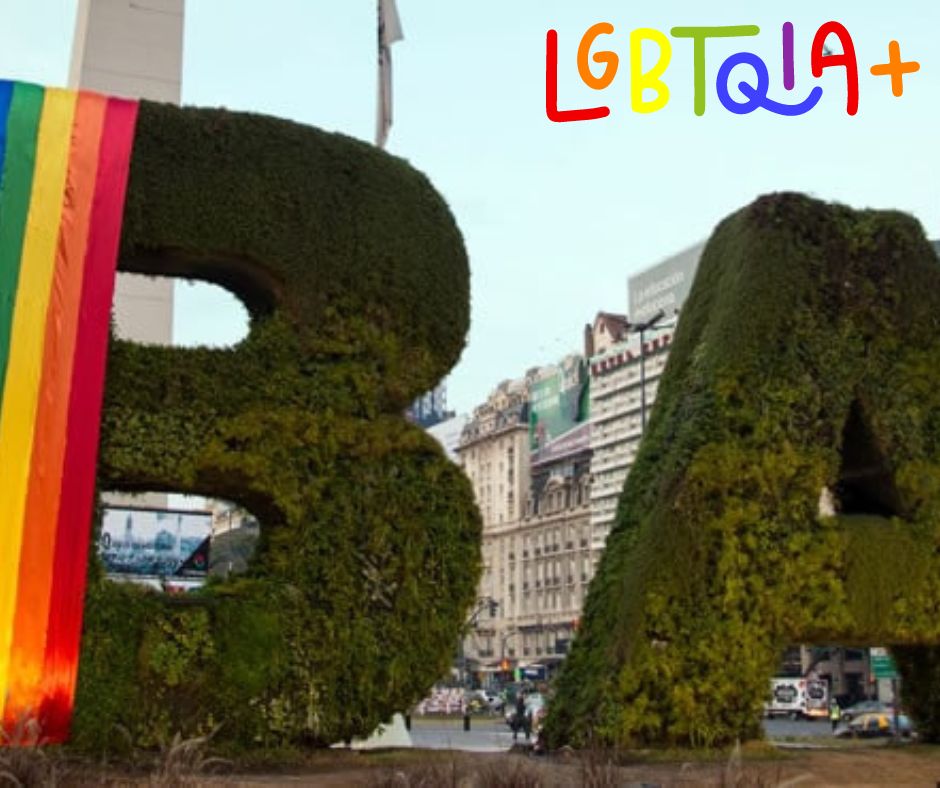
THE ANNUAL NIGHT OF… (La Noche de…)
Buenos Aires is famous for having the night of everything throughout the year! from celebrating the Night of Ice cream Parlors, to the Night of Pizzas, the Night of Bookstores, the Night of Museums, the Night of Temples, you name it you have it! it is soooo much fun! it usually goes on until the famous wee hours of the porteños (people from BA) night life. Each “Night of” is organized by its respective Trade Association together with the City of Buenos Aires. Check your calendar so that you don’t miss it! wonderful discounts and special food flavors and new displays are offered only during the “Nights of..”
IMPORTANT THINGS IN BUENOS AIRES
DOGLAND
These dogs from Buenos Aires are experts at taking group walks around the city…or maybe they’ve just learned how to do it! Buenos Aires is an incredibly dog-friendly city. You’ll see people with their dogs everywhere you go, I mean absolutely everywhere. Dog walkers are an essential service for busy dog owners who can’t find the time to take their furry friends out for a walk or for those who want their dogs to interact with other dogs. There are so many dog walkers in the city that they have even formed a union.

Dogs in BA are everywhere, it reminds me of Paris 30 years ago but with up-to-date dog gear!!
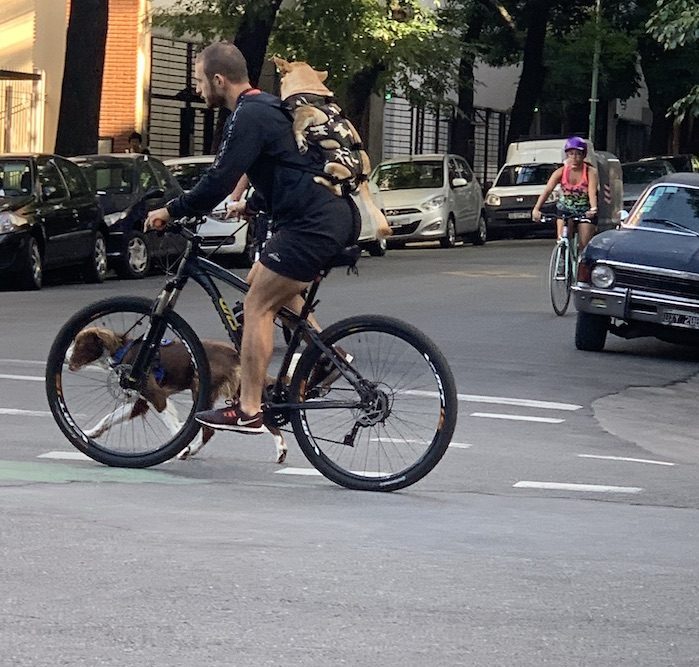
Never leave without your pooch
THEATERHOLISM
There are so many choices to go to the theater in Buenos Aires, there are more theaters in this city than in London, no lie. You can find small theaters, big theaters, neighborhood theaters, big musicals just like New York City, standup, underground, percussion drums, and whatever else you can imagine. From the Majestic Teatro Colon – one of the best Opera houses in the world- and Teatro Cervantes to the more popular plays in Avenida Corrientes. Corrientes Avenue has a large concentration of theaters and cinemas which is a true symbol of nightlife and a street that truly never sleeps. Corrientes Avenue has been the host of theaters for over 100 years and it has been revamped glowing with lights and Broadway plays.

PASSION AND MORE PASSION…
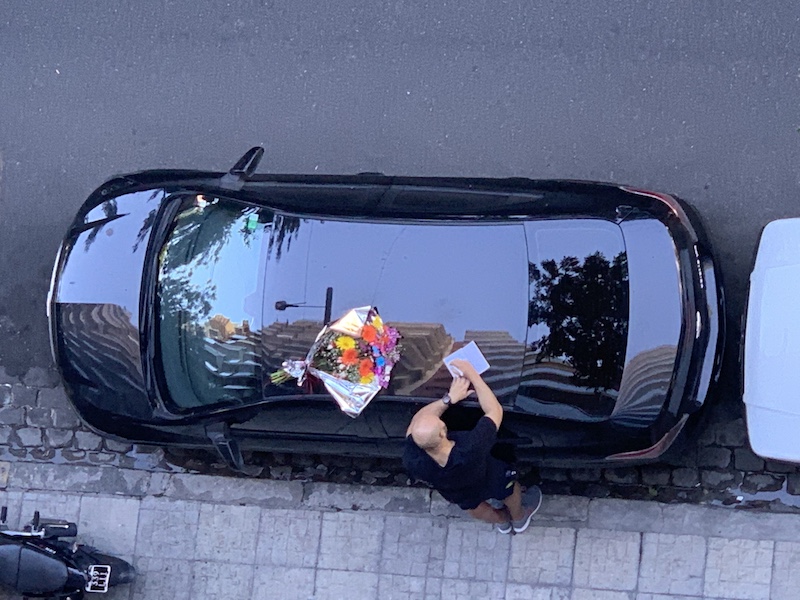
Passion is …Buenos Aires and Argentines all the way. From soccer to romance all areas are taken to the extreme.
PSYCHOANALYSIS
I always say Argentina is not logical it is psychological. Argentina is a country that defies logic and embraces the power of the mind. It proudly holds the title of being the global hub for psychotherapy, with an astonishing number of psychologists per capita. In fact, Argentina boasts a staggering 200 psychologists for every 100,000 inhabitants, and the vibrant city of Buenos Aires takes the crown for having the highest concentration of therapists in the entire country. It’s safe to say that Argentina’s approach to mental well-being is truly unparalleled.
When considering the idea of seeking therapy, the first thought that often comes to mind is the hefty price tag attached to it. However, in Argentina, the public health system provides therapy sessions free of charge (although the system is collapsing, this is another story). It has become so commonplace that you might hear someone casually mention, “I have therapy on Thursdays,” in the same way they would say, “I play tennis on Thursdays.”
BE READY FOR ANYTHING TO HAPPEN IN ANY CORNER
DIA DEL AMIGO (Friendship Day or Friend’s Day)
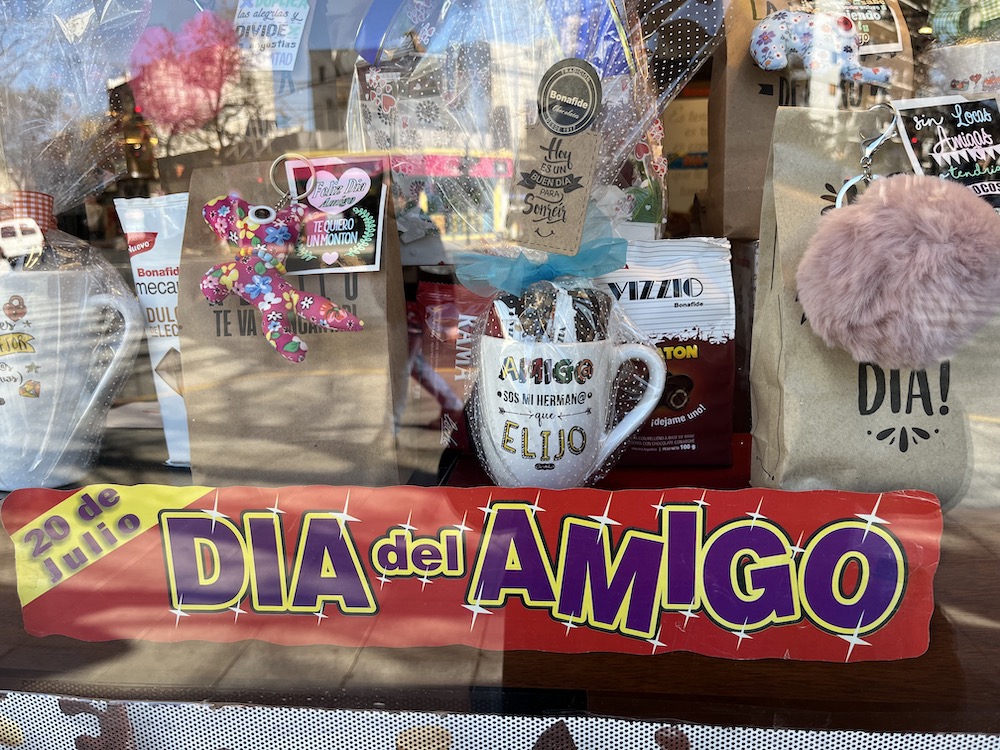
On July 20th Argentines celebrate Friendship Day. Friendship Day in Argentina is like Christmas or someone’s birthday! Why it is celebrated on July 20th? because it was the first step on the moon and an Argentine thought that it was a symbol of friendship towards the universe. Go figure!
On Friendship Day, Argentines receive an overwhelming number of invitations. When I was in Buenos Aires, I received innumerable WhatsApp messages – no kidding! These messages were filled with love and appreciation, like “You’re the best friend,” “I cherish our friendship,” and many more heartfelt expressions. It’s truly heartwarming to receive so much love, but it’s also quite intense, especially considering that I haven’t lived in Argentina for most of my life. Nonetheless, it’s a testament to how Argentines are known for their warmth and intensity when it comes to friendship!
LOVE OF DRINKING MATE (a religion)
The indigenous Guaraní and Tupí indigenous peoples of South America were drinking this infusion way before the tragic arrival of the Spanish people to the continent. Tragic, yes, and still many tragedies happening along the American continent with a “twist” of 20th-century colonialism.

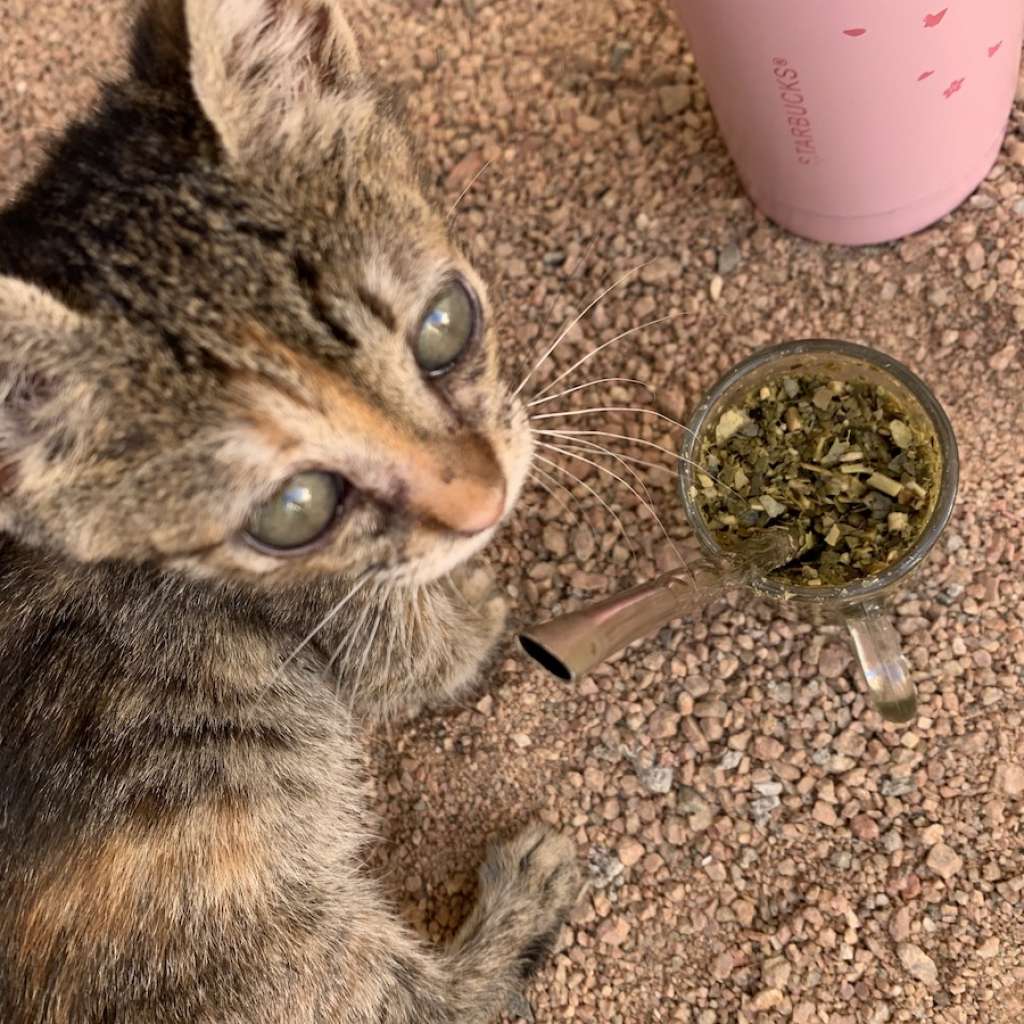
Mate is for sure Argentinian’s best companion
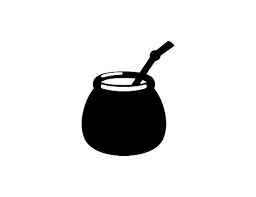
you click the banner for more mate
MATE drinking is such a “cult” that the beverage has a National Day of Mate on November 30th and even a Mate International Fair!!

LOCAL WAYS OF BEING: PORTEÑOS
SPANISH LANGUAGE IN BUENOS AIRES: THE LAND OF THE USE OF DIMINUTIVE SPANISH LANGUAGE
Even as a “local,” I lived most of my life abroad and still do, I get confused at times with what they are talking about. Here are some examples…
In Argentina, and without warning, your name will be shortened to a diminutive. If your name is Karen you will be “Kari,” Monica will be “Moni” Sebastian will be “Seba” and every single name will be able to be shortened to show closeness and affection. Too much intimacy for you? Other words will also be shortened such as “celu” to name your cellular (mobile phone), “finde” to talk about the weekend (short for the word “fin de semana” (end of the week/weekend), etc.
You will need to get your ears peeled to catch the diminutive of your name and any other word that comes out of someone’s mouth.
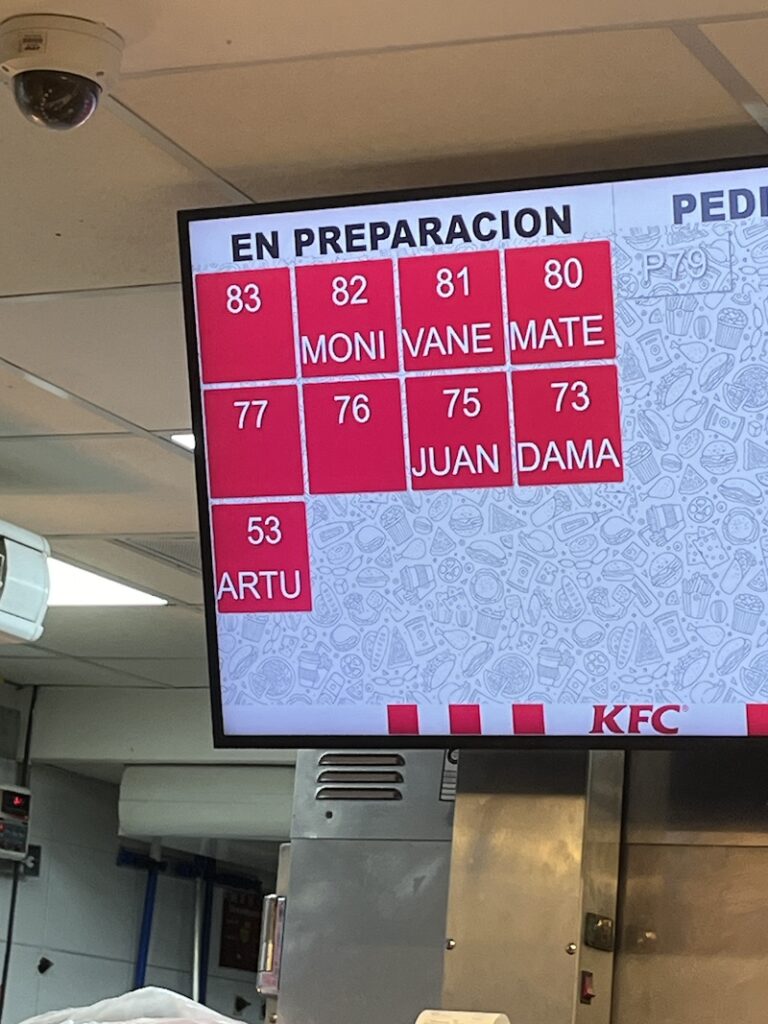
Here on the left you can see a few names shortened on a list to wait on your meal at a local fast food restaurant. It is not shortened only because it fits better on the screen, because that is how they would call ya!
Here is a great example of your name shortened while you wait for your meal at a
Argentines are very “expressive“
Gestures and movements with their language make them very expressive, and the formality of the Spanish language of their neighboring countries is not the norm here. Be ready to un-learn what you already know and to be ready to be treated more informally than what you are used to, something I appreciate now that I am over 50 :-)) !!
The “sh” sound
It is only fair to mention that like many other nations, in particular big countries such as Argentina, there are different accents. However, most Argentines will pronounce the “Y” and the “ll” as a “sh” sound (for the most part and depending on the region). So instead of the traditional greeting “Yo me llamo…” (My name is…) you will hear Sho me Shamo. The intonation and pitch of people who are from Buenos Aires sound a bit closer to an Italian person speaking with their gestures.
European customs mixed with a fast-growing Latin American population
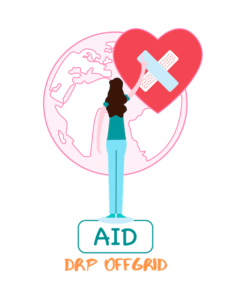
THE NOT SO GOOD ABOUT Buenos Aires and The rest of the country
Poverty, in its simplest form, is a harsh reality. Growing up in a country where only 6% of the population was poor, I considered myself fortunate. However, the situation has drastically changed in Argentina, where now over 40% of people live in poverty. In the face of such dire need, individuals resort to various means to make a living. The “Cartoneros,” as they are called, collect not only cardboard but anything that holds value. It is disheartening to witness hundreds of people pulling carts or searching through garbage bins with sticks, hoping to find something valuable. This sight is a painful reminder of the struggles our people endure. Nevertheless, it is crucial to acknowledge both the positive aspects and areas that require improvement in order to confront this reality.


If you are interested about poverty and development, feel free to check my “Travel Education” tab on the webpage. Also, please check the many ways you can lend a hand. With a portion of every cents we get I try to put together an event for people in need. Here is the link! HELP US HELP OTHERS Thank you!





